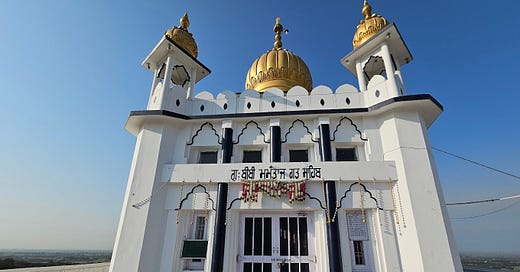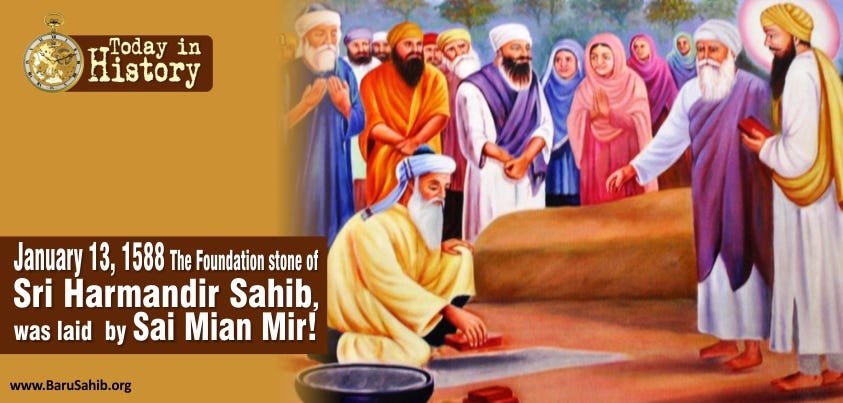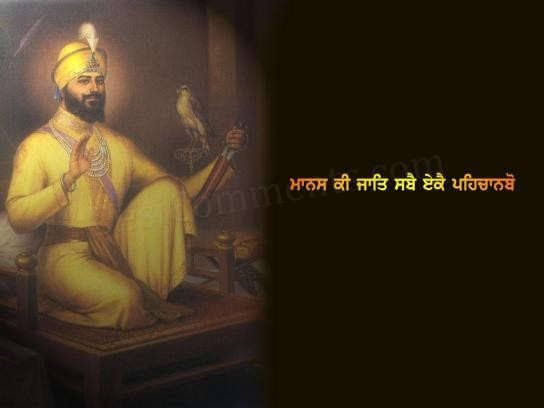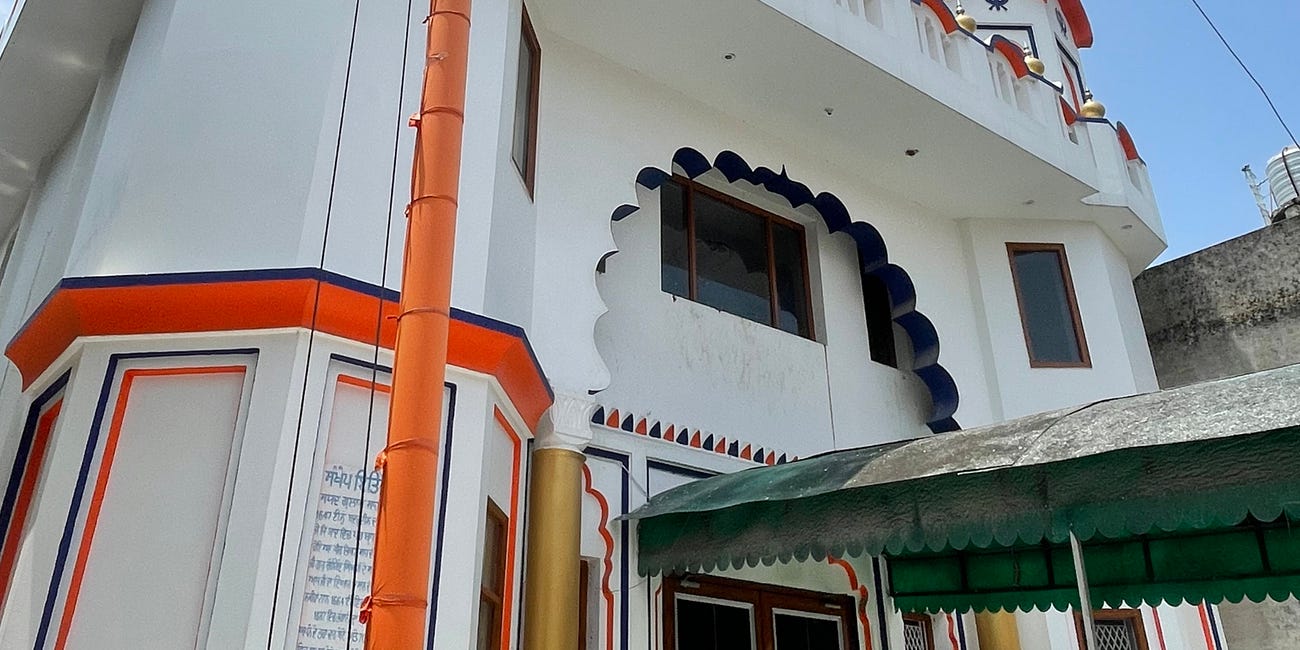Bibi Mumtaz “Kaur”—the Virgin, the Widow, and the Eternal "Singhani"(ਸਿੰਘਣੀ)
The story of Bibi Mumtaz must be told—not as a relic of the past, but as a beacon of interfaith respect, devotion, and courage.
The Virgin, the Widow, and the Eternal ‘Singhani’ (ਸਿੰਘਣੀ)
Preface
A Story Beyond Borders
History often remembers its heroes in stark categories—warriors, martyrs, saints. Rarely does it preserve the stories of those who defied labels, whose lives became living bridges between faiths, cultures, and contradictions. Bibi Mumtaz, a Muslim woman who etched her name into Sikh history through an act of extraordinary courage and devotion, is one such figure.
Her story is not just about religious harmony but about the universal ideals of sacrifice, courage, and faith. A daughter of Islam who became a guardian of Sikhi, a betrothed bride who chose lifelong celibacy, a “virgin widow” who transcended societal constructs of marriage and identity—Bibi Mumtaz’s story challenges us to rethink the boundaries of faith, love, and belonging.
The Historical Backdrop: Guru Gobind Singh Ji’s Flight from Chamkaur
The year 1704 marked a pivotal moment in Sikh history. After a prolonged siege at Anandpur Sahib, Guru Gobind Singh Ji and his Sikhs faced relentless persecution by the Mughal forces of Aurangzeb. The Guru’s family was separated, his elder sons attained martyrdom in Chamkaur, and his younger sons were bricked alive in Sirhind.
During this chaotic flight, Guru Gobind Singh Ji sought refuge at Kotla Nihang Khan, the estate of a loyal Muslim ally. Here, Bibi Mumtaz entered Sikh history, proving that the Guru’s mission was upheld not only by Sikhs but by noble souls of all backgrounds.
Bibi Mumtaz’s Role in Sikh History
A Sacred Encounter
At Kotla Nihang Khan, Guru Gobind Singh Ji and his followers found temporary shelter. Among them was Bhai Bachittar Singh, grievously wounded from battle. As Nihang Khan welcomed the Guru into his fortress, his daughter, Bibi Mumtaz, took it upon herself to nurse Bhai Bachittar Singh back to health.
When Mughal forces arrived at the fort, demanding an inspection, Nihang Khan devised a plan:
He locked Bibi Mumtaz and Bhai Bachittar Singh in a chamber and told the soldiers that his daughter was inside with her husband.
The Mughal officers, bound by their customs, did not enter the room, sparing Bhai Bachittar Singh’s life for the time being.
This singular moment defined the rest of Bibi Mumtaz’s life. Though she had only known Bhai Bachittar Singh for a short time, she forever tied her fate to his.
A Life of Devotion and Legacy
The Widow Who Never Was
Though Bhai Bachittar Singh succumbed to his wounds, Bibi Mumtaz never moved on. In the eyes of the world, she had already been declared his wife. Rather than dispute fate, she embraced it. She refused all marriage proposals, lived in spiritual solitude, and dedicated herself to reciting Gurbani.
For the remainder of her 125-year lifespan, she resided in Purkhali, Ropar, at the very site where she had once shielded Bhai Bachittar Singh.
The Gurdwara That Preserves Her Memory
To honour her devotion, Gurdwara Yaadgar Bibi Mumtaz Ji Sahib was established at her place of meditation. Located in Purkhali village, Punjab, the shrine stands as a unique place of interfaith reverence, respected by Sikhs and Muslims alike.
Even in death, her story refused to conform—her grave lies near the gurdwara, symbolizing her dual identity as both a Muslim woman and a Sikh legend.
The Weight of a Name
The deliberate use of “Kaur” in this title is not a historical claim but a poetic homage. In Sikhi, Kaur (princess) symbolizes equality and sovereignty, qualities that Bibi Mumtaz embodied long before formal Sikh naming conventions existed. Though her Muslim identity remained intact, her actions aligned so profoundly with Sikh values that she became, in spirit, a Singhani—a title traditionally reserved for Sikh women wedded to the Khalsa’s ideals.
This narrative is not an attempt to claim her for any one tradition but rather an acknowledgment that devotion and bravery transcend religious boundaries.
The Three Epithets
The Virgin
Bibi Mumtaz’s rejection of marriage was a radical act in 18th-century Punjab. In an era when a woman’s destiny was largely dictated by familial and societal expectations, she exercised unparalleled agency. By refusing her prearranged betrothal, she reclaimed her body and purpose, dedicating herself instead to nursing and protecting Bhai Bachittar Singh, a gravely injured Sikh warrior.
The term "virgin" in her story is not merely a reference to her unmarried status but also serves to accentuate the purity of her devotion—she shared no physical relationship with the valiant Sikh soldier she cared for, yet her bond with him became one of profound spiritual fidelity. Her choice was not one of renunciation, but of sacred commitment—a vow to serve something greater than societal expectations. In doing so, she embodied the Sikh principle of selfless service, choosing faith and devotion over worldly attachments.
The Widow
Though she never formally married Bhai Bachittar Singh, Bibi Mumtaz lived as his widow for decades. When her father declared that the injured warrior was her husband to save him from Mughal forces, the implication of his words became irreversible. Even after his tragic passing, barely hours after the Mughal soldiers departed, she upheld the commitment made in that moment.
This was no mere metaphor—she embraced the austere life of a Behwa (widow), reciting Gurbani, meditating, and dwelling in solitude at the very site where she had once shielded Bhai Bachittar Singh. Renouncing all worldly attachments, she lived in quiet devotion, her days marked by the rhythm of prayer and remembrance. Her Behwapan (state of widowhood) was not merely a societal label but a sacred testament—a love beyond physical union, a bond forged in shared sacrifice and spiritual kinship.
The Eternal “Singhani”
Bibi Mumtaz’s legacy endures not in grand monuments but in quiet defiance. She represents the countless unsung women who shaped Sikh history through their unyielding resolve. To call her a Singhani is to honor her as kin to the Khalsa—a guardian of Guru Gobind Singh Ji’s mission, even as she remained rooted in her Islamic faith.
Her devotion was never about conversion; rather, it was about seva (selfless service) and faith. Just as Guru Nanak proclaimed, "Na koi Hindu, na koi Musalman" (There is neither Hindu nor Muslim), Bibi Mumtaz’s life bridged faiths, proving that spiritual kinship is greater than religious identity.
Summing Up: Guru’s Vision of Universal Brotherhood
Guru Gobind Singh Ji proclaimed:
“ਮਾਨਸ ਕੀ ਜਾਤ ਸਬੈ ਏਕੈ ਪਹਚਾਨਬੋ।”
(Recognise all of humankind as one race.)
His devotees were not confined to Khalsa Sikhs alone; they came from all religions, genders, and backgrounds. The Guru transformed lives, lifting individuals above caste, creed, and divisions.
The story of Bibi Mumtaz must be told—not as a relic of the past, but as a beacon of interfaith respect, devotion, and courage.
Her life whispers a timeless truth:
"The divine resides not in rituals, but in the courage to protect the vulnerable."
Beyond Divisions: Chronicling Sikh-Muslim Instances of Amity in History
Introduction— history of hostilities: Throughout history, narratives have perpetuated the notion of animosity between Sikhs and Muslims. Tragic events, especially the martyrdom of the two Sikh Gurus, Guru Arjan Dev Ji and Guru Tegh Bahadur Ji, and the unparalleled sacrifice of the four "
Sadhaura Gurdwara: Peer Budhu Shah's Unwavering Devotion and Loyalty to "Dashmesh Pita".
My visit to Sadhaura: Today, I had the fortuitous privilege of visiting Sadhaura, a historic town in the Yamunanagar district of Haryana, where a small but magnificent Gurudwara stands at the birthplace of Peer Budhu Shah, a testament to his profound devotion of for Sri Guru Gobind Singh Ji. As a humble Sikh, this impromptu pilgrimage was a deeply movin…







